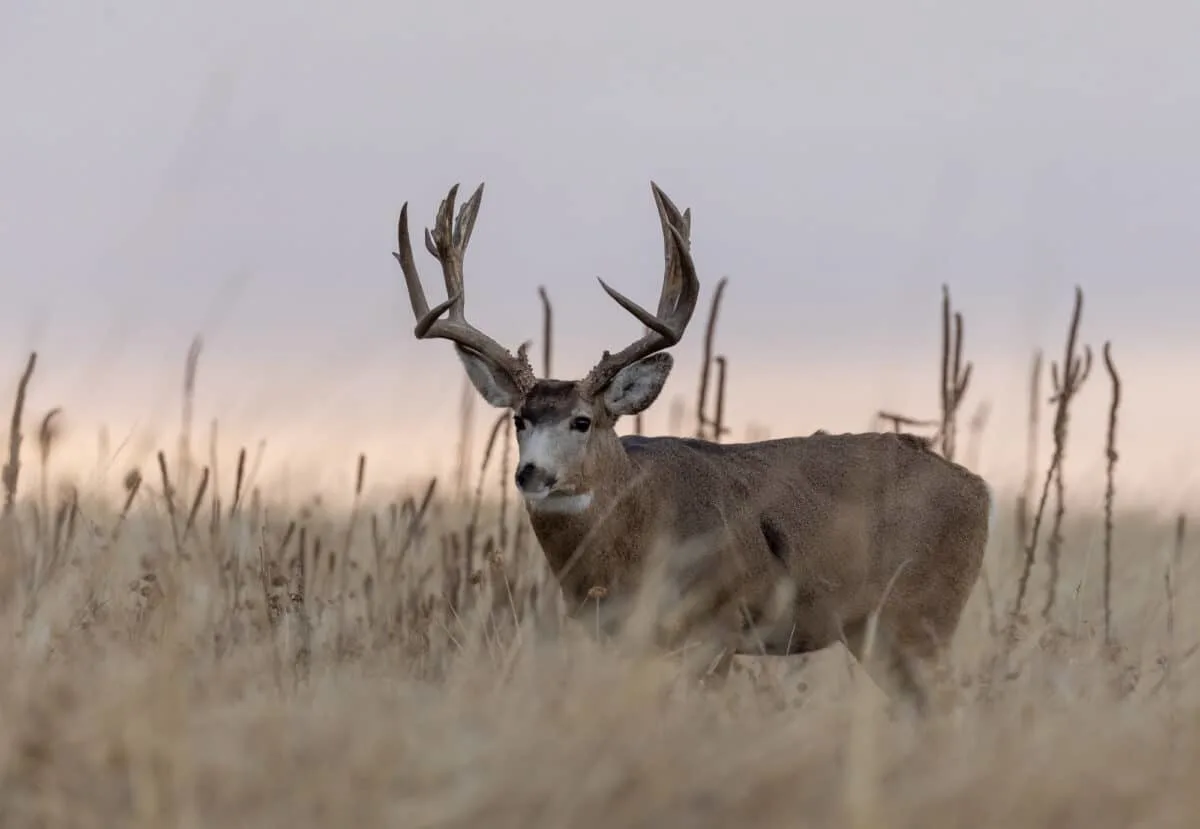Have you ever wondered what it would be like to stand beside two of the most majestic mammals in Africa – the African elephant and mule deer? Seeing them up close and personal can be a mesmerizing experience, as each species has adapted differently.
This article will explore the fascinating differences between these two powerful creatures inhabiting the wilds of Africa, from their physical characteristics to their behaviors. Discover why these animals are so captivating despite their size difference!
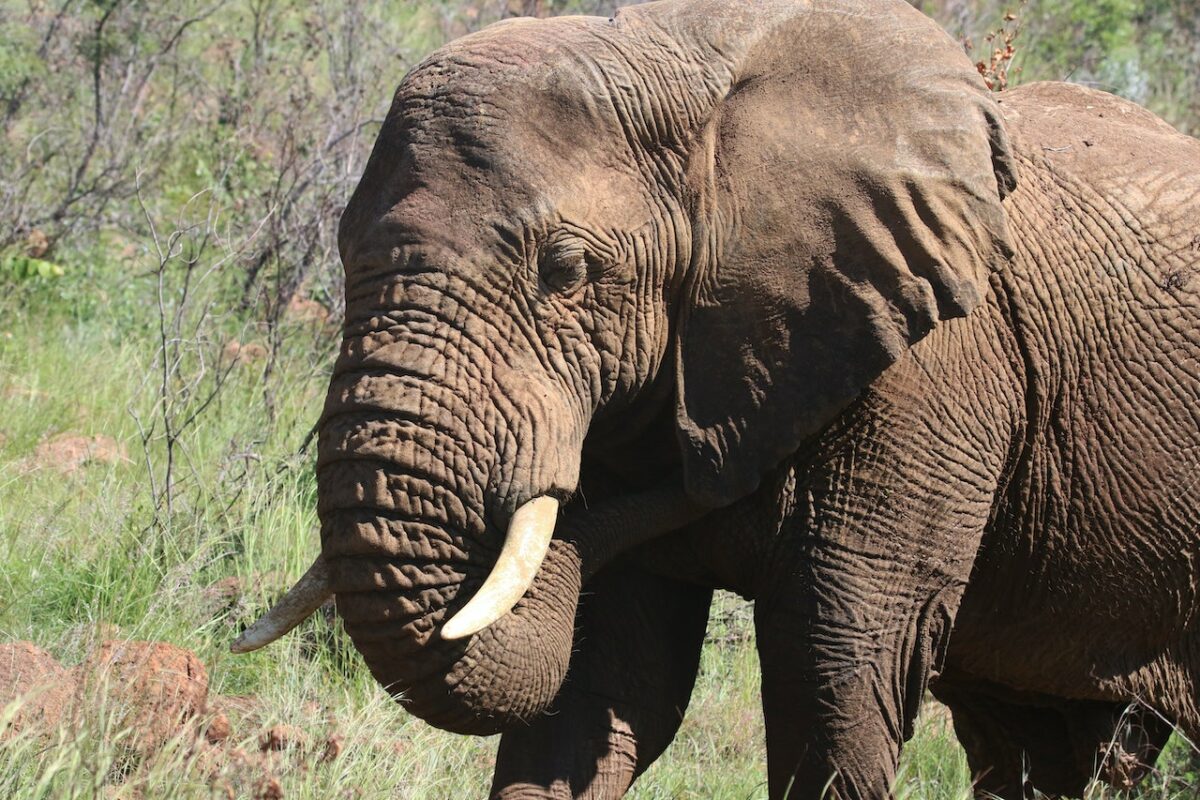
Want to jump ahead? Click below
Comparison Table
| Features | African Elephant | Mule Deer |
|---|---|---|
| Physical Characteristics | Largest land animal, up to 7.5m in length, 6 tonnes in weight, prehensile nose or trunk, large tusks made of ivory, large ears | Smaller than elephants, up to 3ft tall at the shoulder, up to 300 pounds in weight, bifurcated antlers (forked), large ears |
| Habitat and Distribution | Native to diverse African landscapes, including savannas, forests, deserts, and marshes. Highest concentrations in Eastern and Southern Africa. | Native to western parts of North America, including grasslands, forests, deserts, and mountainous areas. Found in Canada, the United States, and northern Mexico. |
| Adaptations for environment | Large ears for heat dissipation, versatile trunk for feeding, drinking, communication, and bathing, strong tusks for defense, and massive size | Large, mule-like ears for excellent hearing, unique bounding gait called stotting, forked antlers that regrow annually, and preference for browsing on shrubs and trees that provide ample cover |
| Threats and conservation | Threats include poaching for ivory, habitat loss due to deforestation and human encroachment, and climate change. Conservation efforts include anti-poaching initiatives, habitat restoration and protection, community-based conservation projects, and international legal frameworks such as the Convention on International Trade in Endangered Species (CITES). | Threats include habitat loss due to urbanization, hunting pressures, and climate change. Conservation efforts include habitat restoration and protection, management of hunting, and population monitoring. |
Introducing the African Elephant and the Mule Deer – Physical Characteristics and Behavior
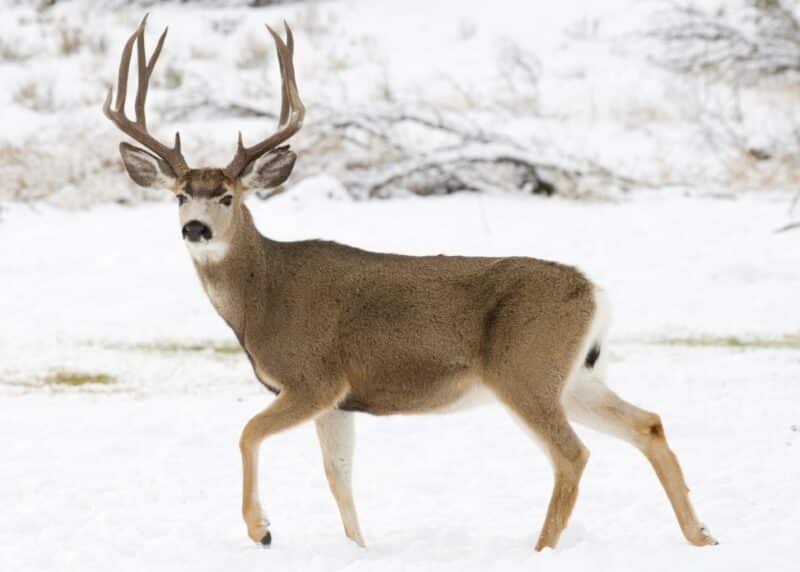
African elephants are the world’s largest land animals and can reach up to 7.5m in length, 3.3m high at the shoulder, and 6 tonnes in weight. They have a long prehensile nose or trunk, which they use for communication, drinking water, and grasping objects.
Elephants also have two large tusks made of ivory for digging and defense. The size of an elephant’s tusks depends on its gender; males typically have larger tusks than females. African elephants also have large ears shaped like the continent of Africa that help them regulate their body temperature by releasing excess heat.
Mule deer are smaller than African elephants but still quite large compared to other deer species. Adult mule deer can reach up to 3 feet tall at the shoulder and weigh up to 300 pounds. Mule deer also possess unique antlers among deer species as they are bifurcated (forked). Antlers are shed yearly after mating season and then regrow in the springtime. Mule deer also have large ears that help them detect predators from far away distances and aid in thermoregulation during hot summer days.
African elephants and mule deer may be different species. Still, they share some common physical characteristics such as size, weight, ears, and antlers/tusks, making them unique among other animals in their respective habitats.
Differences in Habitat, Diet, and Lifestyle
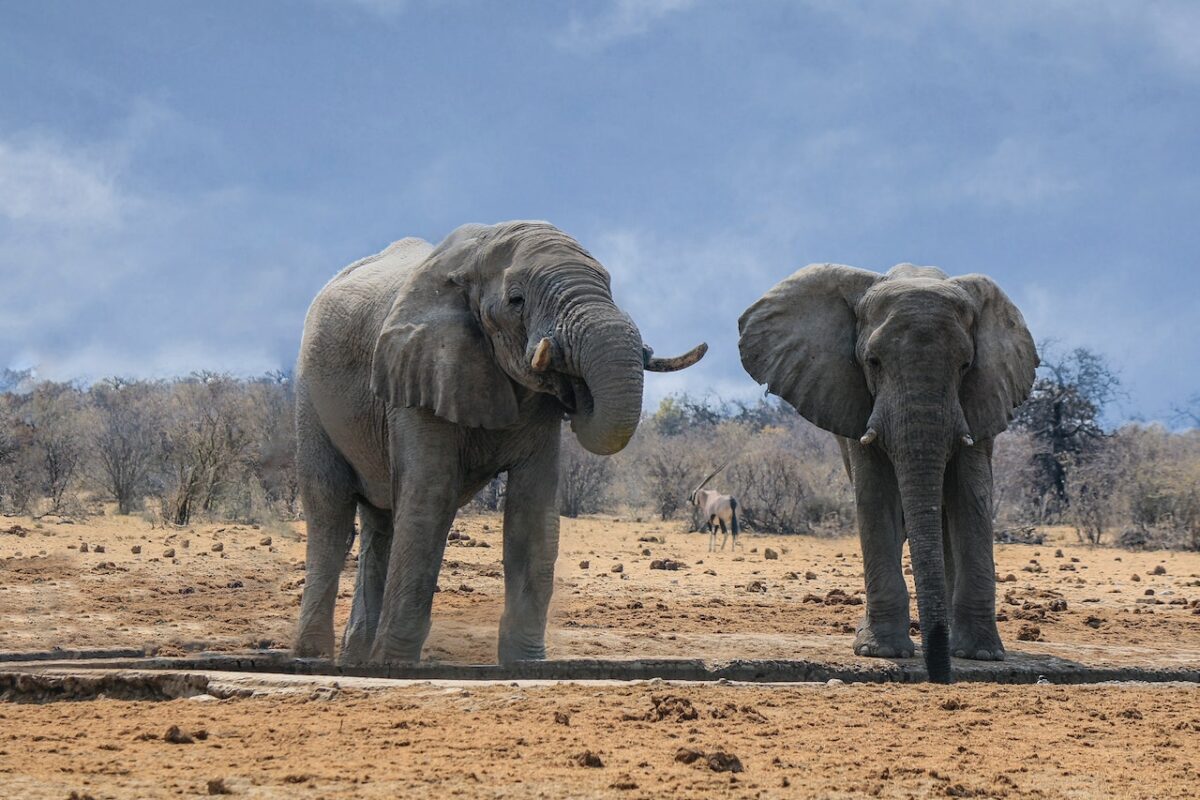
African elephants are native to the diverse landscapes of Africa, where they play a significant role in shaping their environment. Their natural habitat spans various ecosystems, including savannas, forests, deserts, and marshes. These versatile animals can adapt to different vegetation types and climates, making them an essential part of the African ecosystem.
Geographically, African elephants can be in Sub-Saharan Africa, with the highest concentrations in Eastern and Southern Africa. Countries like Botswana, Kenya, Tanzania, Zambia, and Zimbabwe host significant populations of these majestic creatures. However, habitat loss, poaching, and human-elephant conflict have significantly reduced their range over the past century, and their distribution is now fragmented.
Mule deer, on the other hand, are native to the western parts of North America. Their natural habitat includes various environments, such as grasslands, forests, deserts, and mountainous areas. Mule deer are well-adapted to live in these varied habitats, and they prefer browsing on shrubs and trees, which provide ample cover from predators.
The geographic distribution of mule deer extends from the southern regions of Canada down through the western United States and into northern Mexico. They are in California, Nevada, Utah, Colorado, Wyoming, and Montana. Mule deer populations have also experienced fluctuations due to habitat loss, urbanization, and hunting pressures; however, conservation efforts have been made to ensure the sustainability of this species.
African elephants and mule deer inhabit unique and diverse habitats that contribute to the rich biodiversity of their respective continents. While they face challenges due to human activities, ongoing conservation efforts aim to preserve their habitats and ensure the survival of these remarkable animals.
Unique Adaptations of Each Animal for their Environment
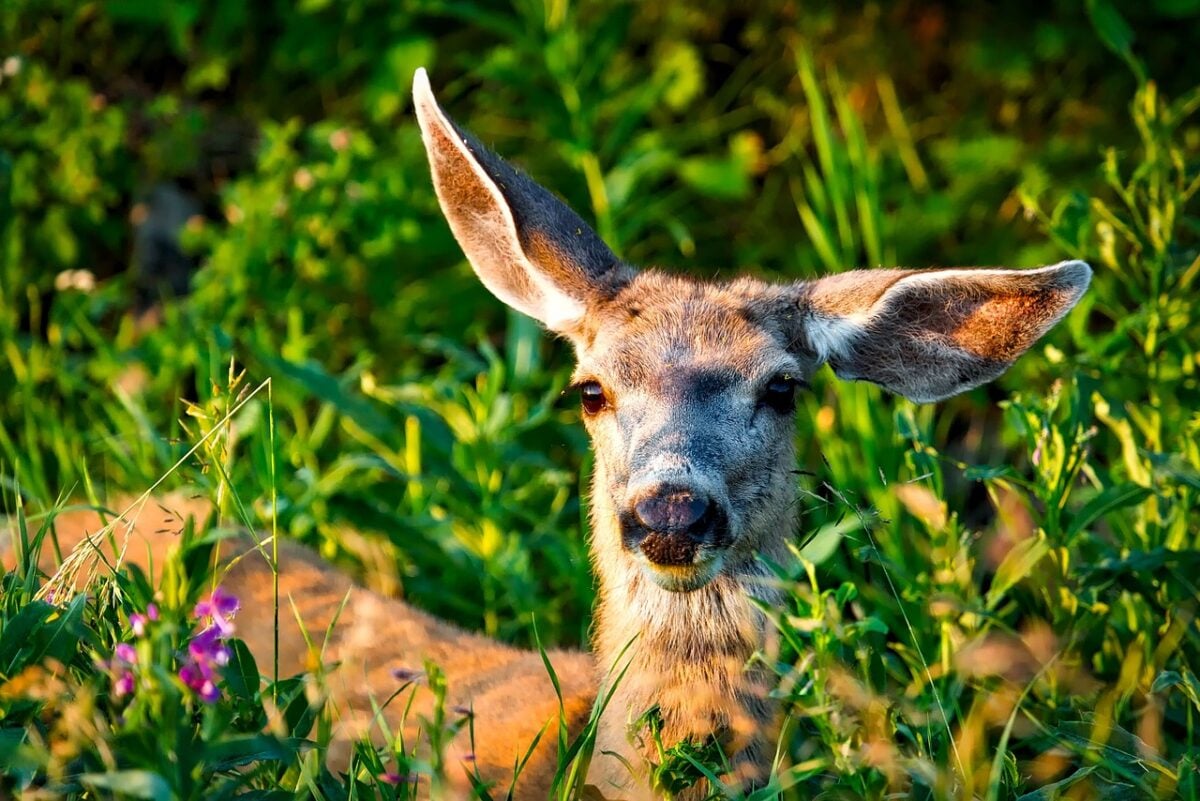
African elephants and mule deer have evolved unique adaptations to thrive in their respective environments.
African elephants possess several adaptations that enable them to survive in the diverse habitats of Africa. Their large ears, which can span up to 6 feet, help dissipate heat and regulate body temperature in hot climates. The elephant’s trunk is a versatile appendage used for feeding, drinking, communicating, and bathing dust, protecting its skin from sunburn and insect bites. Their massive size and strong tusks are also effective deterrents against potential predators.
Mule deer, on the other hand, are adapted to living in various North American landscapes. Their large, mule-like ears give them excellent hearing abilities, allowing them to detect predators from far distances. Mule deer are known for their unique bounding gait, called stotting, which enables them to navigate through rough terrain and escape predators quickly. Additionally, their antlers, forked and growing annually, display strength during mating season and are a weapon for defense against rivals.
African elephants and mule deer showcase remarkable adaptations that have allowed them to successfully inhabit and navigate their distinct environments, highlighting wildlife’s incredible diversity and resilience.
Threats and Conservation of African Elephant and Mule Deer
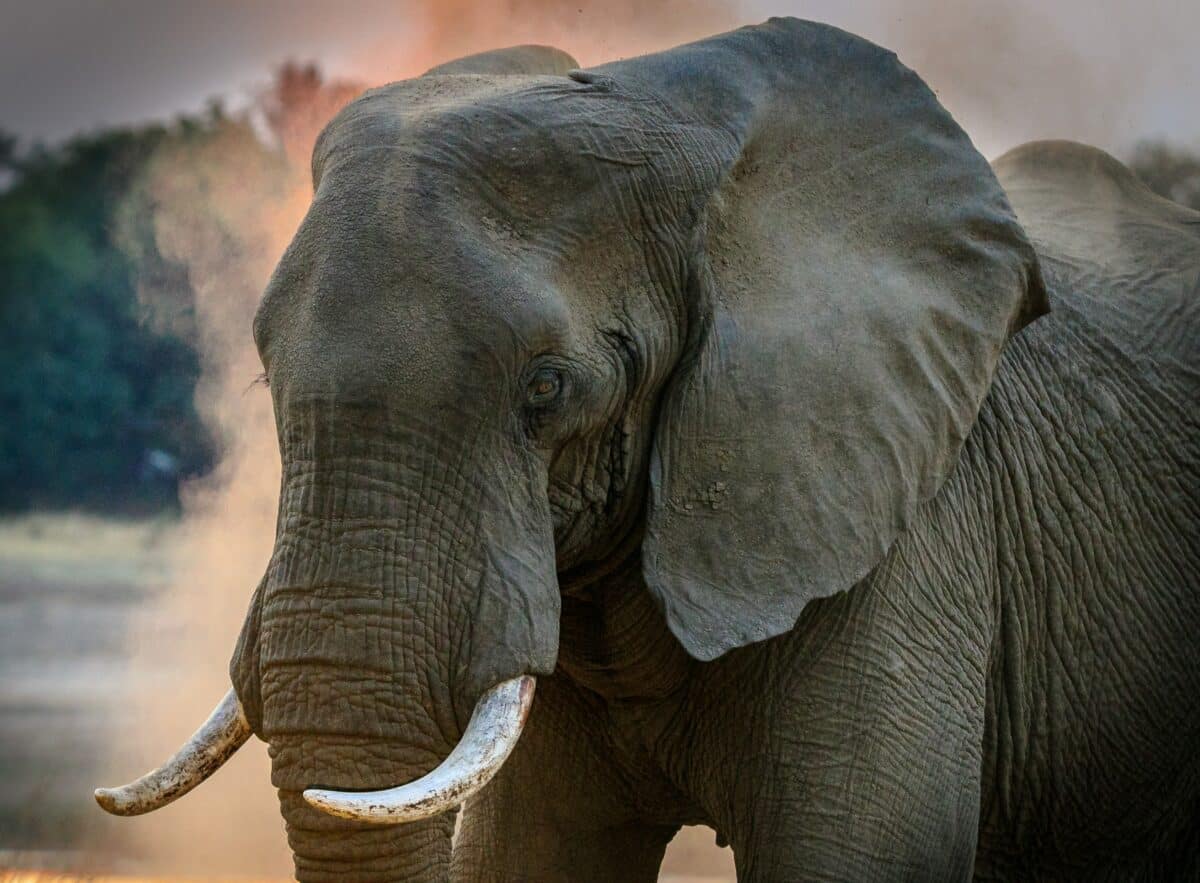
African elephants are iconic animals that play a vital role in maintaining the balance of their ecosystems. However, they face numerous threats to their survival. Poaching for ivory remains one of the most significant dangers. Illegal markets still exist despite international bans on the ivory trade.
Habitat loss due to deforestation and human encroachment is another major threat, leading to elephant population fragmentation and increased human-elephant conflict. Climate change also challenges their survival, as it can lead to changes in the distribution and availability of food and water sources.
Conservation efforts for African elephants are ongoing and multifaceted. They include anti-poaching initiatives, habitat restoration and protection, community-based conservation projects, and international legal frameworks such as the Convention on International Trade in Endangered Species (CITES). Governments, non-governmental organizations, and local communities work together to implement these strategies to ensure the long-term survival of African elephants in the wild.
Mule deer, native to North America, also face several threats to survival. These include habitat loss and fragmentation due to urbanization and agricultural development, competition with other ungulates for food resources, and predation by natural predators like mountain lions and coyotes, which have increased due to the decline of large predators like wolves. Additionally, mule deer are susceptible to diseases and parasites, which can significantly impact their populations.
Conservation efforts for mule deer involve habitat preservation and management, population monitoring, and research into the factors affecting their survival. State wildlife agencies, federal land management agencies, and non-profit organizations collaborate on these endeavors to maintain healthy mule deer populations and habitats. Public education and outreach programs also play a crucial role in promoting awareness about the importance of mule deer conservation and the challenges they face.
African elephants and mule deer face significant threats to survival. Still, concerted conservation efforts are ongoing to protect these remarkable animals and their habitats for future generations.
Key Points
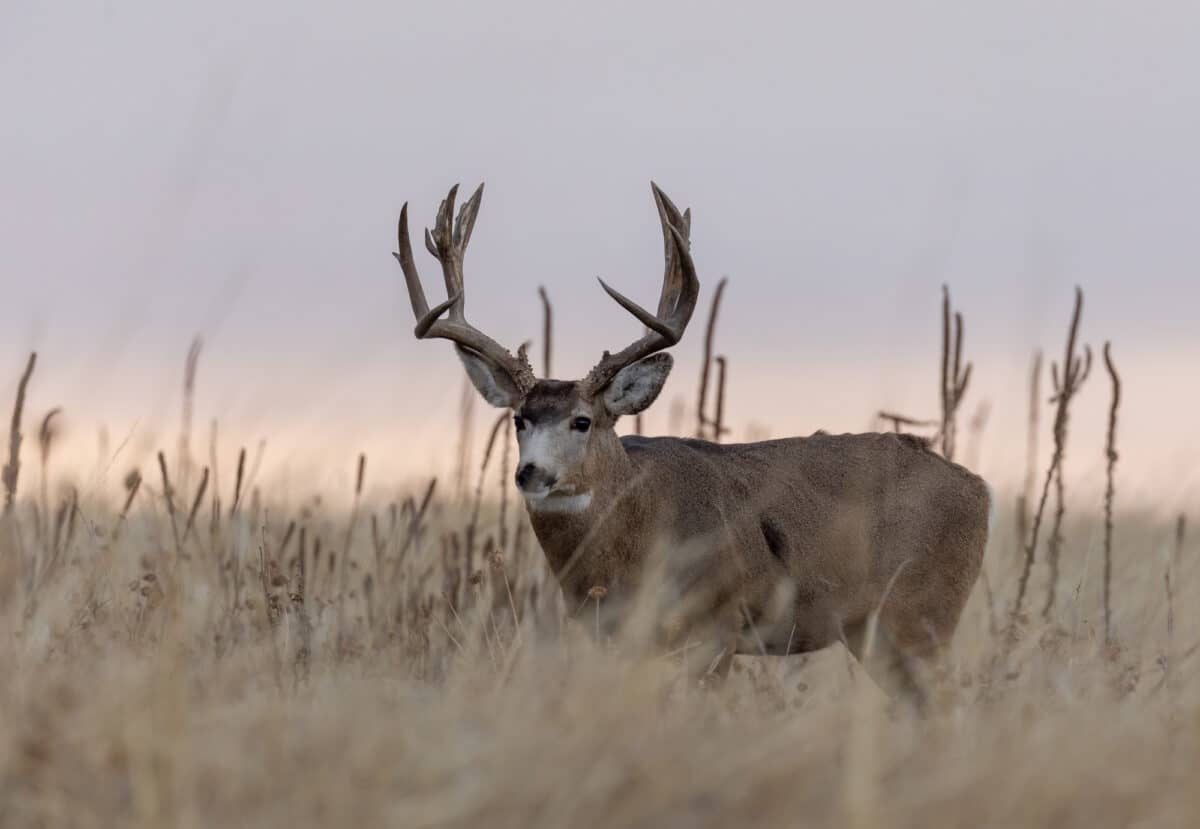
| Both species have unique adaptations to their environments, such as the elephant’s trunk and ears, the mule deer’s stotting gait, and large ears for hearing. |
| Both species have unique adaptations to their environments, such as the elephant’s trunk and ears, the mule deer’s stotting gait, and large ears for hearing. |
| African elephants are native to Africa and live in diverse habitats such as savannas, forests, and marshes. Mule deer are native to western North America and live in grasslands, forests, and mountainous areas. |
| Both species have unique adaptations to their environments, such as the elephant’s trunk and ears, and the mule deer’s stotting gait and large ears for hearing. |
| African elephants face threats like poaching, habitat loss, and human-elephant conflict. Conservation efforts include anti-poaching initiatives, habitat restoration and protection, and international legal frameworks. |
Wrapping Up with African Elephant vs. Mule Deer
The African Elephant and Mule Deer are two majestic animals adapted to different settings. As well as taken on different lifestyle habits, and cultivated unique traits for survival.
While their differences make them starkly opposite creatures in many ways, our findings suggest similarities between the species regarding longevity. Each animal can survive up to 15 years or even more in their respective habitats. Unfortunately, with the changing climate and human intervention in the form of poaching and hunting, these animals’ lifespans are significantly shortening. Conservation efforts like creating parks and banning hunting are vital in protecting the animals we studied today, preventing them from being wiped out due to our continued interference with nature.
As a result of this research, we now have a better understanding of how climate change affects two fascinating creatures. We hope that by promoting conservation efforts across the globe, they can continue to thrive for many generations.
Thanks for following along with me! I hope you enjoyed reading about these two entertaining animals. Next are African elephant vs. Elk (Wapiti), African elephant vs. Chimpanzee, and African Elephant vs. Bonobo.
Join our Forum for free today!

- Big Cats Love Mouthing Affection - July 22, 2024
- Kind Elephant Merciful To Lion Cubs - July 22, 2024
- Beachgoers Save Massive Shark Stranded In Florida - July 22, 2024

